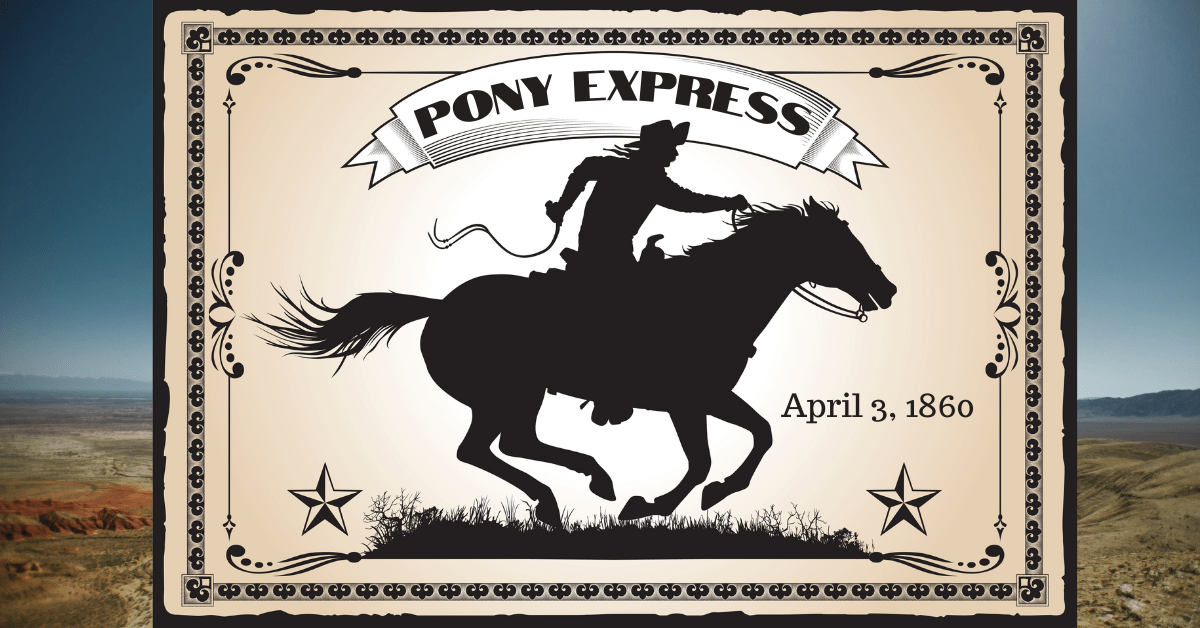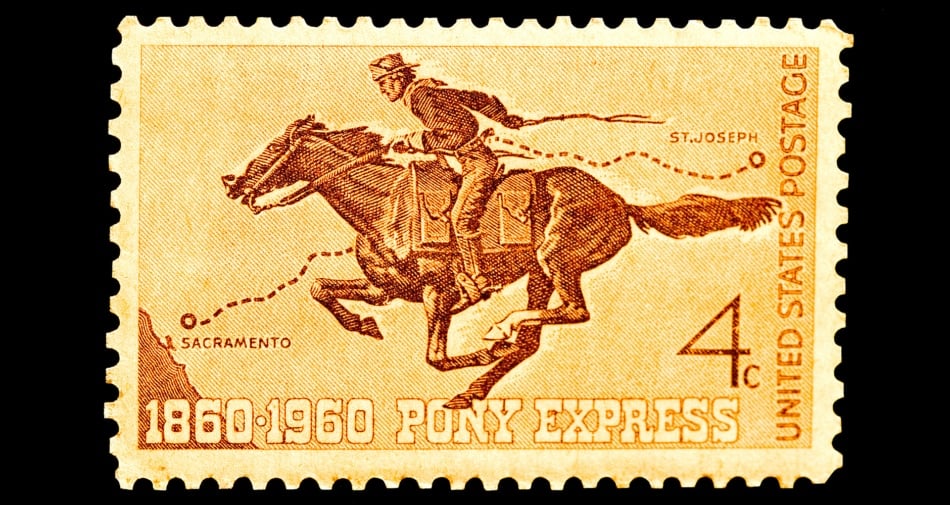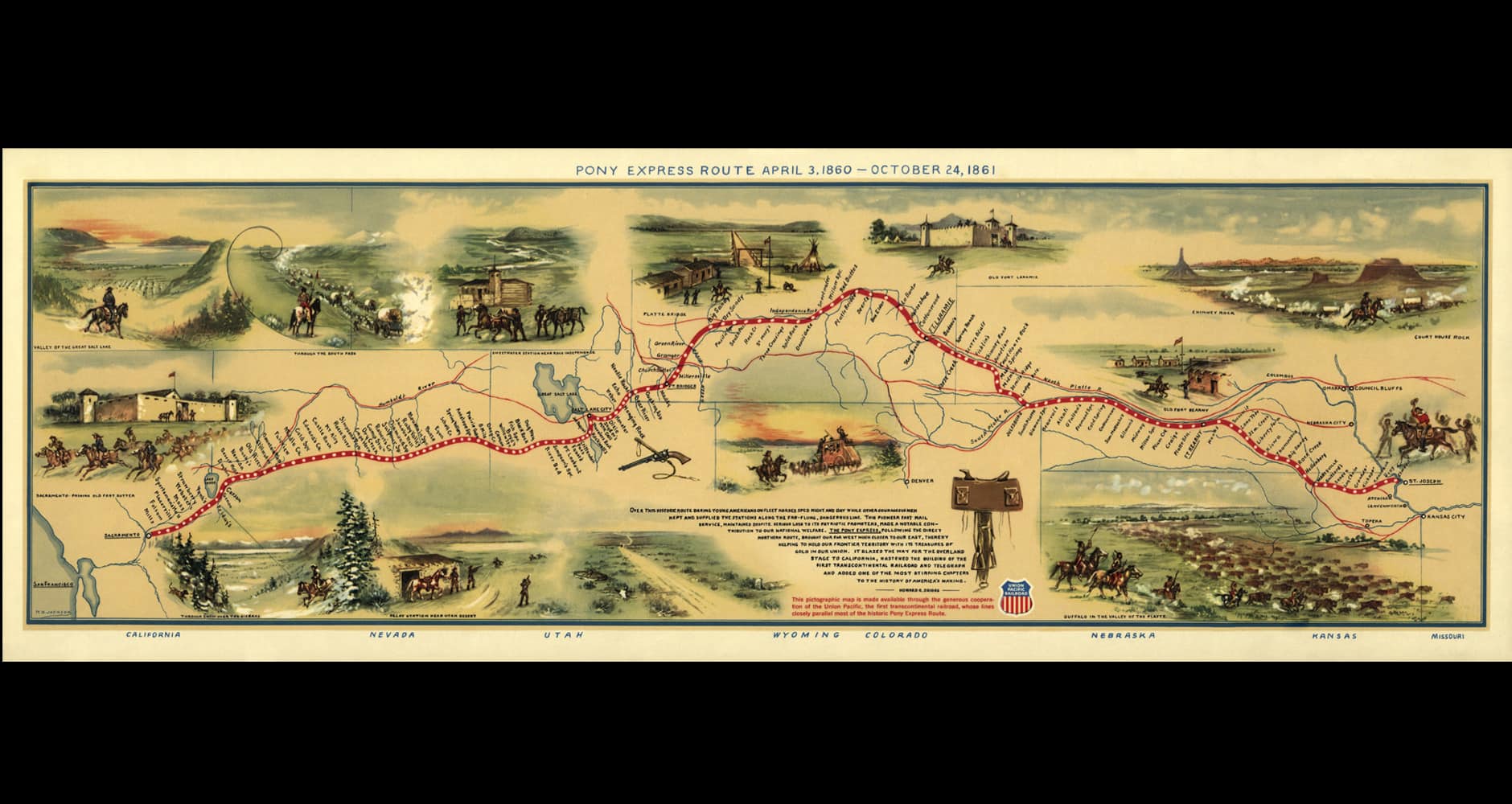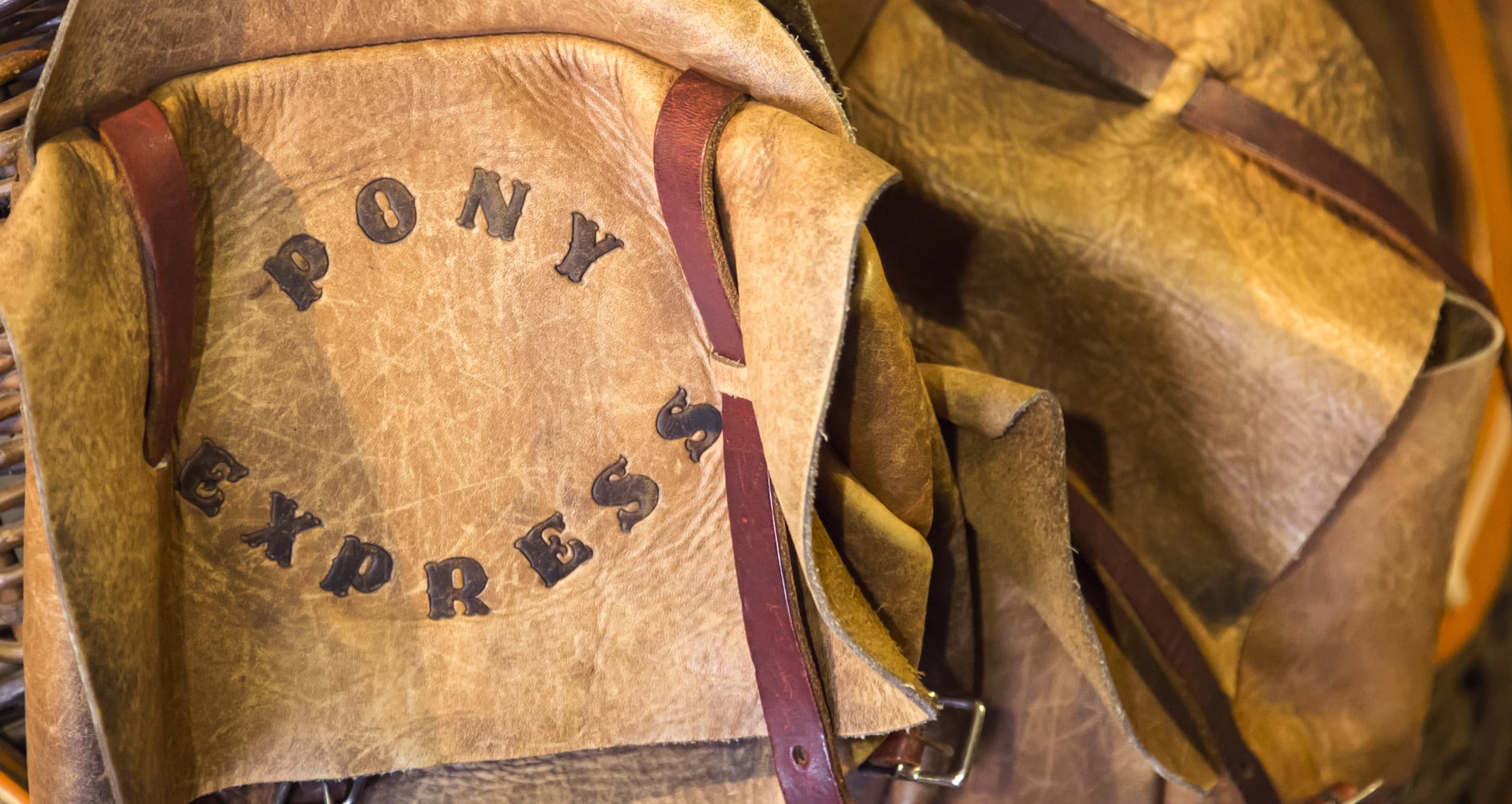Fastest Mail In The West: The History Of The Pony Express
It's hard to imagine, but there was a time when express mail was delivered by a fast horse and rider through the Old West. Learn more about the Pony Express and its inaugural ride on April 3, 1860.

In this era of instantaneous email, texts, Skype, and FaceTime, it’s tough to imagine the days when stagecoaches and trains delivered information across the country. Today, while we fondly refer to the U.S. Mail as “snail mail,” it’s hardly a snail’s pace—Express mail will deliver your packages via airplanes and trucks overnight. But there was a time when if you needed your message to get there as quickly as possible you enlisted the help of the Pony Express. With the Pony Express, letters could arrive in Sacramento, California, from St. Joseph, Missouri, a distance of some 1,966 miles, in a blisteringly fast 10 days, using nothing but horses and riders.
When Was The Pony Express Founded?

The Pony Express was founded over 150 years ago by a team of investors familiar with delivering freight—William Hepburn Russell, Alexander Majors, and William B. Waddell—who formed the Leavenworth & Pikes Peak Express Company (later known as the Pony Express), in answer to the need for a new, faster overland mail route—one that could feed the communications needs of the California Gold Rush, as well as those of settlers emigrating westward to Utah and over the Oregon Trail.
In 1858 the Postmaster General of the United States began scaling back mail service in the West, thanks to the increasing dependence on telegraph lines. Russell, Majors, and Waddell saw this as an opportunity to start an express courier service.
The Inaugural Ride of the Pony Express
The inaugural ride began on April 3, 1860, and left St. Joseph, Missouri at 7:15 p.m. with the boom of a cannon. Eleven days later, at about midnight, the mail arrived in San Francisco to cheering crowds, fireworks, and a band playing.
The mail was carried in padlocked pouches called cantinas stitched onto a broad piece of leather. This device was known as a mochila, and was draped over the saddle, the rider sitting atop it, his weight holding it in place. Only authorized persons had the keys to the locked cantinas.
The logistical requirements for the Pony Express were more than just putting a rider on a fast horse and handing him a pouch of mail. Relay stations had to be built or adapted from existing structures, every 10-15 miles along the route. The distance between stations was calculated on how long a horse could travel at a full gallop over the given terrain before tiring. (Some of the original 157 stations are still standing as tourist attractions, such as Hollenberg Station near Hanover, Kansas). These stations had to have stables and provisions and fresh horses ready. Some 500 horses were purchased to supply the service. Horses were normally changed at every relay point, but sometimes riders would ride two legs of the journey before another rider would take over.

Riders Take An Oath
The 183 Pony Express riders employed by Russell, Majors, and Waddell traveled light. They were each issued a firearm, a knife, The Bible, and a canteen of water. They took a solemn oath of loyalty to refrain from profane language, intoxicating beverages, and fighting with any other employee. It was said that almost none of the riders seemed to honor their oath, and in the short time the service was active, they gained a reputation as a headstrong and coarse group of men. Should a horse turn up lame and have to be put down, the rider was expected to take up the mochila and walk to the next relay station.
An Expensive Trip
Like today’s express delivery services, the Pony Express was expensive. The overhead costs of maintaining the relay stations, the wages of the riders ($50/month), and upkeep of the horses and stables, required that deliveries of mail, telegrams, and small parcels were charged between $1-$5 per half ounce. A standard mochila, when full, weighed about 20 pounds.
When Did The Pony Express Service End?
The Pony Express was in business for merely 18 months. The service ended in October of 1861 when a key section of the first transcontinental telegraph line was completed between Western Missouri and Salt Lake City, linking networks that for the first time allowed instantaneous communication between Washington D.C. or New York City and San Francisco. Mail continued, of course, on trains, but the need for speedy communication was now left to the telegram.
Despite its short run, The Pony Express has come to epitomize the American spirit and continues to be a symbol of the Old West. The idea of daring riders traveling their network of relay stations on horseback through a wild and untamed country to deliver the mail should give us all pause when we think about how technology has changed communications forever.
And yet, there are still men and women who move items from one end of the country to the other, between relay points, who are the modern-day equivalent of The Pony Express, and who deserve our thanks.
Learn more about the Pony Express by visiting the Pony Express National Museum website here.

Edward Higgins
Edward Higgins is a freelance writer, artist, home chef, and avid fly fisherman who lives outside of Portland, Maine. He studied at Skidmore College and Harvard University. His article 10 Best Edible Insects appears in the 2020 Farmers' Almanac.







We are planning an outdoor “Baby shower” in MI, mMay 1st. Ideas of weather????
Hi Josie1234, It looks good! Check out our long-range weather forecast for your Zone here: https://www.farmersalmanac.com/long-range-weather-forecast